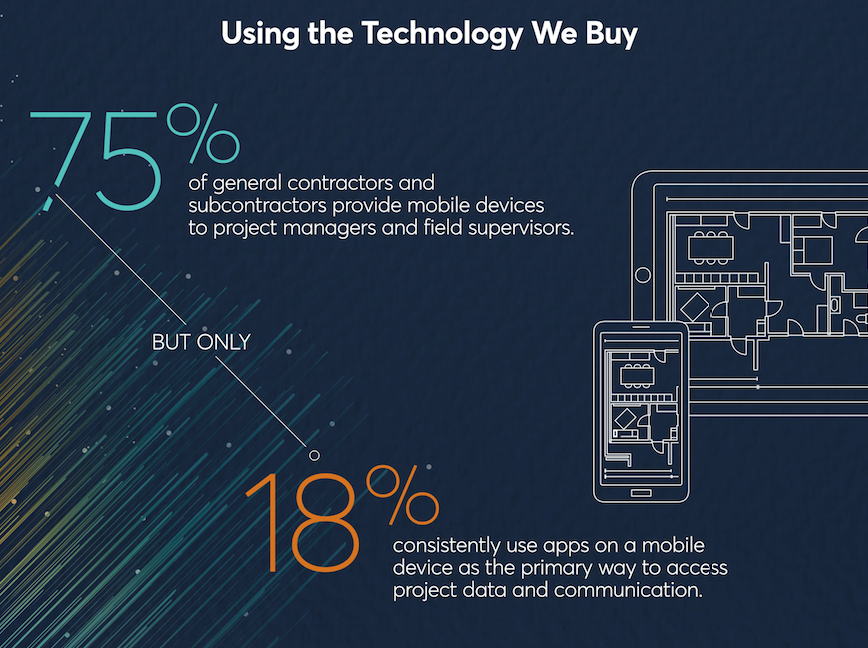In every generation, life, company and industry, there comes that moment called a “turning point.” It’s the instance in time that’s been building up. That final hour where change is inevitable. For construction, the turning point is the productivity crisis. More than a hot topic and more than a buzz phrase, 60-plus years of stagnation have lead up to this “fight or flight” moment. But, is the industry willing to move past this pivotal moment, to head onwards and upwards?
The construction productivity crisis is far from a secret within the industry. Well-known and widely accepted in most companies as the status quo, projects more often than not experience significant cost and schedule overruns. But last year, it became clear that the broader world was watching as the issue populated news cycles, including an article from The Economist that cited eye-opening research from McKinsey and Company about the construction industry: “If its productivity growth had matched that of manufacturing in the past 20 years, the world would be $1.6 trillion better off each year,” stated the publication.
One year ago today, we offered up a solution to the construction productivity crisis in a blog titled, “Welcome to a New Era of Construction Productivity Software.” Over the last year, PlanGrid has increased our commitment to making a real impact in improving productivity on projects. Now, our software is used in over one million projects, more than 90 countries and all sectors of our industry, including commercial, healthcare, higher education, industrial, in addition to heavy civil, where our growth has exceeded 200% in the past 12 months. Furthermore, PlanGrid is trusted by the world’s largest owners, architects, general contractors and subcontractors, including more than 50% of the top 100 ENR-ranked specialty contractors.
The momentum signifies that companies are wising up to the power of technology to address productivity loss. But–has the impact been significant enough? While the use of productivity technology is growing in the industry, we remain committed to the enormous work needed to keep the construction industry moving forward as a whole.
Productivity Crisis Is Still Taking its Toll
Unfortunately, the productivity crisis is still alive and well in construction. From PlanGrid and FMI’s report, “Construction Disconnected,” it’s estimated that the US will lose $177 billion in non-productive labor activities. The loss includes looking for project data and information, conflict resolution and dealing with mistakes and rework. Additionally, the report estimates that poor data and communication contributes to $31 billion in rework.
Image Source: Construction Disconnected
The continued toll the construction productivity crisis takes on projects, teams and companies is massive. But while these numbers may feel discouraging, there’s evidence of a powerful shift of companies embracing the turning point.
Change Is on the Horizon
Seeing technology growth, in general, is a positive development in construction. As an example, take a look at the changing mindsets towards mobile in a 2012 JBKnowledge Construction Tech Survey versus one from 2017–the importance of mobile technology has experienced a sea of change.

Image Source: JB Knowledge 2017 Construction Technology Report
Clearly, more companies are valuing mobile capabilities on jobsites but businesses are still struggling to determine how to connect technology to results. For instance, the “Construction Disconnected” report reveals the underutilization of mobile technology in the field, with only 18% of construction professionals consistently using apps to access project data and communication:

Image Source: Construction Disconnected
Nevertheless, we dissected the results of the FMI survey by PlanGrid customers–comparing users to non-users. Our findings concluded that PlanGrid users are significantly more connected than their peers:
- PlanGrid customers use mobile apps to access data and collaborate twice as much as non-customers
- PlanGrid customers are 42% more likely to ask field/end users for feedback before investing in construction technology
- Construction companies using PlanGrid are twice as likely to have construction software exceed their expectations
Beyond this, even the results we’ve seen from individual projects and companies have been inspiring. Just a few examples of companies that have seen real efficiency improvements from our construction productivity software platform include:
Seeing these results signals that companies are headed in the right direction. But to continue this momentum and move the rest of construction out of stagnation, we have a long road ahead of us.
How We’re Going to Move the Needle for the Future
At the first annual PlanGrid Construction Summit in June, which drew 1,000 construction professionals from nearly every state and many countries, we released news about up and coming product features and developments. You can read about them in depth here but we’ll also recap a few of them below.
Better Access to Data
Although we can’t promise a utopia of construction without rework, we do imagine a reality where we can significantly reduce the 52% of rework caused by poor data and communication. Over the next year, we’re continuing to grow the amount of rich and actionable data construction teams have access to in real time.
BIM
BIM has provided immense value to a design-front, but it’s potential has yet to reach the field. Our coming Revit integration for BIM will allow sheets to be synced from the model directly into PlanGrid. With the power of BIM, field teams will have more data to build more productively with less error.
Insights
Our soon to be released Insights product will take decision making in construction to the next level. By fueling better decisions at a project and corporate level, PlanGrid will help prevent mistakes on a job and empower construction professionals to improve their overall productivity and profit margins.
Address the Labor Shortage Head On
The labor shortage remains a major roadblock to productivity improvement in the construction industry. Both an investment in our labor force and technology is needed to render this serious issue.
Investing in Our Future Workforce
There’s a major need to invest in our future workforce by building skills in technology. Organizations like the National Electrical Contractors Association (NECA) are leading these initiatives. The association recently revamped its apprenticeship training program to include construction tech like PlanGrid and BIM.
Automation
In addition to using technology as a recruitment tool, the right solutions can also reduce the time spent on typically time-consuming activities. For instance, PlanGrid’s Automatic Submittal Log removes the manual time and effort it takes to create submittals–from weeks to minutes. Stay tuned for new Submittals features coming soon.
Improving Workflows and Communication
Every construction project requires a different set of specifications and a new crew to complete the work, and no one environmental situation is like another. As a result, a lack of standards creates an enormous time waste for teams just to organize before execution.
Task Management and Standardization
Although there are countless unique factors to every project, there are repetitive actions that happen on every project. To systemize many of these similar actions, companies are benefiting from standardizing specific processes and workflows with PlanGrid. Over the next few weeks, we’ll offer new task related features within our product.
Embracing the Turning Point to Fix the Construction Productivity Crisis
While news about the construction productivity crisis has only emerged recently, there are more eyes on this issue like never before. To quote The Economist article once again, “The world has an annual $1 trillion shortfall in infrastructure spending. Those projects that are given the green light tend to come in late and over budget. If the construction industry could build more for less, investors, citizens and customers would benefit.”
The “New Era of Productivity Software” is here, but it’s up to companies to use the tools and implement the action at this critical turning point. Not only do companies depend on improving their productivity to remain competitive in today’s market – the world needs construction companies to be more efficient to meet the needs of growing populations and economic changes.



Responses